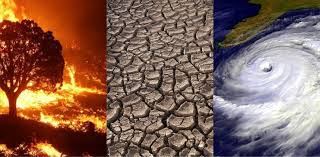
The World Bank Group announced on Thursday that it delivered a record $42.6 billion in climate finance during fiscal 2024, marking a significant 10% increase from the previous year's $38.6 billion. This achievement is part of a broader strategy to direct 45% of its total financing toward climate projects, a commitment aimed at addressing the urgent need for climate adaptation and mitigation.
While this increase in funding demonstrates progress, it remains insufficient compared to the estimated trillions of dollars required annually to facilitate the clean energy transition in emerging markets and developing countries. The World Bank’s President, Ajay Banga, has taken steps to enhance the bank's financial leverage, implementing capital adequacy measures that could free up an additional $10 billion to $12 billion in annual lending capacity over the next decade. This effort aims to tackle not only climate change but also other global crises, including pandemics, while maintaining the bank's traditional focus on poverty alleviation and development.
The implications of this record climate financing are multifaceted. Firstly, it signals the World Bank's recognition of the escalating climate crisis and the necessity for immediate action. The projects funded range from cyclone shelters in Bangladesh to electric bus rapid transit systems in Cairo and Dakar, demonstrating a comprehensive approach to addressing climate vulnerabilities in diverse regions. By allocating resources to both mitigation and adaptation, the bank is positioning itself as a critical player in the global fight against climate change.
However, the commitment to climate finance also highlights the stark reality of the funding gap that persists. Despite the World Bank's efforts, the financial resources allocated fall short of what is required to meet the pressing needs of developing countries. This discrepancy raises questions about the sustainability of funding sources and the urgency for collaboration among governments, private sectors, and international organizations. Without a coordinated effort to mobilize additional resources, the ambitions set forth by the World Bank may not translate into the transformative impact needed to address the climate emergency.
Moreover, the focus on climate finance brings to light the interconnectedness of various global challenges. Climate change is not an isolated issue; it exacerbates existing problems such as poverty, food security, and health crises. The World Bank’s dual focus on climate and poverty alleviation reflects an understanding that addressing climate change is integral to sustainable development. Failure to adequately finance climate initiatives could hinder progress in these other critical areas.
The commitment to devote 45% of total lending to climate-related projects in fiscal 2025 underscores the bank’s strategic shift. This reallocation of resources emphasizes the growing importance of environmental sustainability in development planning. As countries grapple with the effects of climate change, the demand for financial support for sustainable initiatives will only increase. The World Bank’s leadership in this regard could serve as a model for other financial institutions, encouraging them to align their strategies with global climate goals.
In conclusion, the World Bank's record climate finance is a crucial step forward in addressing the climate crisis and supporting sustainable development. However, the challenges ahead are daunting. The funding gap remains significant, and without collaborative efforts to mobilize additional resources, the goals of climate adaptation and mitigation may remain out of reach. The bank’s proactive measures signal an important shift, but the path forward will require concerted action from all sectors of society.
(Source:www.theprint.com)
While this increase in funding demonstrates progress, it remains insufficient compared to the estimated trillions of dollars required annually to facilitate the clean energy transition in emerging markets and developing countries. The World Bank’s President, Ajay Banga, has taken steps to enhance the bank's financial leverage, implementing capital adequacy measures that could free up an additional $10 billion to $12 billion in annual lending capacity over the next decade. This effort aims to tackle not only climate change but also other global crises, including pandemics, while maintaining the bank's traditional focus on poverty alleviation and development.
The implications of this record climate financing are multifaceted. Firstly, it signals the World Bank's recognition of the escalating climate crisis and the necessity for immediate action. The projects funded range from cyclone shelters in Bangladesh to electric bus rapid transit systems in Cairo and Dakar, demonstrating a comprehensive approach to addressing climate vulnerabilities in diverse regions. By allocating resources to both mitigation and adaptation, the bank is positioning itself as a critical player in the global fight against climate change.
However, the commitment to climate finance also highlights the stark reality of the funding gap that persists. Despite the World Bank's efforts, the financial resources allocated fall short of what is required to meet the pressing needs of developing countries. This discrepancy raises questions about the sustainability of funding sources and the urgency for collaboration among governments, private sectors, and international organizations. Without a coordinated effort to mobilize additional resources, the ambitions set forth by the World Bank may not translate into the transformative impact needed to address the climate emergency.
Moreover, the focus on climate finance brings to light the interconnectedness of various global challenges. Climate change is not an isolated issue; it exacerbates existing problems such as poverty, food security, and health crises. The World Bank’s dual focus on climate and poverty alleviation reflects an understanding that addressing climate change is integral to sustainable development. Failure to adequately finance climate initiatives could hinder progress in these other critical areas.
The commitment to devote 45% of total lending to climate-related projects in fiscal 2025 underscores the bank’s strategic shift. This reallocation of resources emphasizes the growing importance of environmental sustainability in development planning. As countries grapple with the effects of climate change, the demand for financial support for sustainable initiatives will only increase. The World Bank’s leadership in this regard could serve as a model for other financial institutions, encouraging them to align their strategies with global climate goals.
In conclusion, the World Bank's record climate finance is a crucial step forward in addressing the climate crisis and supporting sustainable development. However, the challenges ahead are daunting. The funding gap remains significant, and without collaborative efforts to mobilize additional resources, the goals of climate adaptation and mitigation may remain out of reach. The bank’s proactive measures signal an important shift, but the path forward will require concerted action from all sectors of society.
(Source:www.theprint.com)














